Every year hunters congregate in different parts of East Medinipur in West Bengal for attending melas to mark the celebrations surrounding the worship of goddess Kali. These coincide with the new moon, or amavasya, which fell on June 5 this year, World Environment Day.
The perpetrators, over 5000 tribal hunters, were organised packs of men out for a day of pure destruction and drunken revelry. They had converged on railway stations such as Uluberia, Deulti, Panskura and Kirai, located on the Howrah – Kharagpur line. Armed with axes, knives, bows and arrows and slingshots, their main intention was to destroy wildlife. Their victims were anything that moved – mongoose, squirrels, monitor lizards, rat snakes, jungle cats and a devastatingly wide range of birds (waterhen, jungle babblers, barbets, parakeets, woodpeckers, parakeets, and kingfishers). This is an account of our shocking tryst with hunters on 5th June.
Images © Suvrajyoti Chatterjee, Arindam Chakraborty, Ranjit Sur and Meghna Banerjee.
A detailed account of the operation:
- Once we got news of the hunting festivities at East Medinipur we decided to pay a visit to get an understanding of the scale of the hunting. Our team from PUBLIC ( People United for Better Living In Calcutta/Cities) comprising, Suvrajyoti Chatterjee, my driver Sambhu Das and I intercepted the first group of about 50 poachers at Deulti, Bagnan in Howrah district. Their weapons and bags containing animals were seized and the Forest Department was informed immediately. The animals that our team released included two Bengal Monitor Lizards (Schedule I, Wildlife Protection Act, 1972), White-breasted Waterhen, Orioles, and several squirrels. We also found several carcasses, including that of Jungle Babblers, Barbets, Parakeets, Woodpeckers, Munias, etc.
- Next we reached Panskura and Khirai in East Medinipur. We intercepted about 5 groups of hunters in different places and seized their weapons and released the animals that were still alive which included Bengal Monitor Lizard, Rat snakes, (Schedule II, Wildlife Protection Act, 1972), several birds, etc. The Forest Department had been informed earlier. They were helpful and assured their full cooperation and assistance.
- Our team along with Forest Department also intercepted a group of about 15 hunters near Khirai rail gate in East Medinipur. The group had killed mongoose (Schedule II, Wildlife Protection Act, 1972) and we also found in their bags a plethora of animal carcasses like Parakeets, Woodpeckers, Barbets, Kingfisher, Squirrels and Jacanas and remains of what appeared to be a Jungle Cat (Schedule II, Wildlife Protection Act, 1972). Even though the Forest Department noted down the names of these hunters, the Department faced some difficulty since they were not getting help from the police or the Railway Protection Force for making arrests.
- At Panskura station, live animals as well as carcasses of hundreds of wild animals lay on the platform, ready to be transported or slaughtered by the hunters. There were more than 2000 hunters assembled on that single platform each group carrying multiple bags. Therefore, there were more than 2000 animals at Panskura station alone on 5th of June and ALL OF THEM DIED. Some hunters were skinning the animals and cooking them right on the platform. According to the hunters intercepted earlier, major gathering of hunters was at another railway known as Khirai in East Medinipur. Now that translates to thousands of dead animals in one single day!! And to think that the hunting took place for more than 3 days!!
- A cursory examination of the dead/injured animals at Panskura railway station revealed Bengal Monitor Lizards, Golden Monitor Lizards, Water Monitor Lizards (listed under Schedule I of the Wildlife Protection Act, 1972), Jungle Cats (Schedule II, Wildlife Protection Act, 1972), Golden Jackal (Schedule II, Wildlife Protection Act, 1972), Mongoose (Schedule II, Wildlife Protection Act, 1972) , Hare, Civets (Schedule II, Wildlife Protection Act, 1972), snakes like Rat Snakes (Schedule II, Wildlife Protection Act, 1972), Bronzebacks,Vines, Kukris, birds like Indian Pittas, Bronze-winged Jacana, Pheasant-tailed Jacana, Barbets, Scaly-breasted Munias, White-rumped Munias, Common Snipes, Painted Snipes, Grassbirds, several Warblers, Woodpeckers, Asian Openbills, Orioles, Barbets, Doves, Green Pigeons, Painted Stork.
- Such mass slaughter and display of wildlife in complete violation of Wildlife Protection Act, 1972 on the Indian Railway premises was happening with full blessings of the Railway Protection Force. The railways are responsible for any offence on their premises but the Railway police looked the other way while the hunters descended on the platforms to gather and display their illegal loot of wild animals.
- So, on a day when the Eastern Railway ran press advertisements about World Environment Day, the Railway Police stood and watched Bengal’s biodiversity being decimated. When our team was pleading with the hunters to hand over the live animals and getting harassed by the drunken mob, the railway police instead of helping us, were accusing us of creating trouble and also told us that “we will take action only when the police orders us. Go to the thana (police station) and bring police order”.
- After requesting the District Magistrate, some policemen in plain clothes did show up. But no arrests were made, no live animals were seized and released, no severe warnings were issued. In fact, the police officers who came said that that the Superintendent of Police, East Medinipur had specifically told them not to intervene as it would result in “law and order situation”.
- We fell short of numbers. If there was greater participation from the conservation community, maybe we could have saved some more animals. On a brighter side, we have been given assurance of full cooperation by the Forest Department and District Magistrate to organise awareness campaign, seminars and implementation of other methods needed to stop this massacre. We need active participation from the environmental fraternity to stop this massacre.
If we are able to conduct extensive campaigning, sensitize the administration and insist on strict implementation of laws, we can hope to see a drop in numbers in the coming years. The Choice is ours-do we accept such hunting and allow Bengal’s biodiversity to be wiped out or fight against it. The scale of devastation which killed thousands of animals within a span of 2-3 days is astounding.
Whatever the odds maybe, this shocking massacre has to stop.

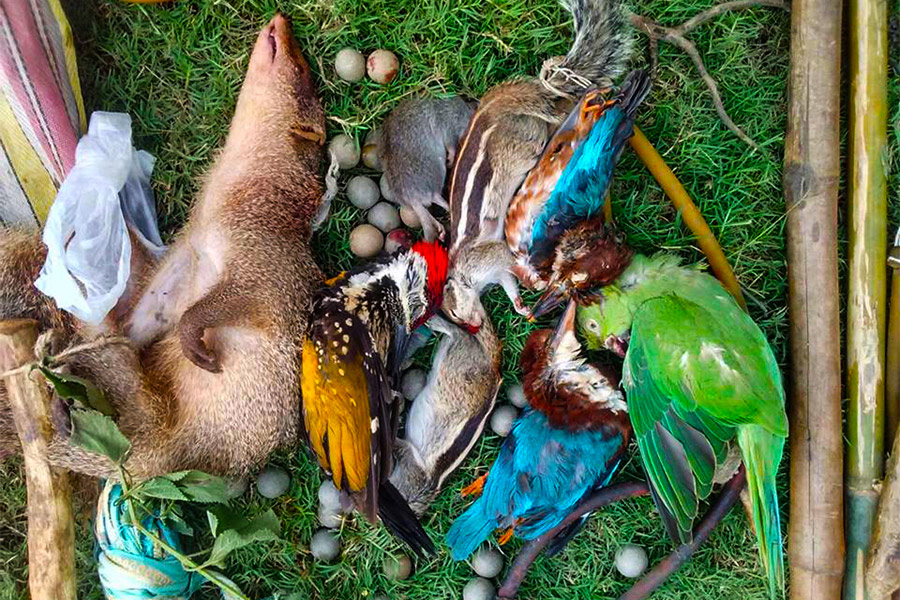

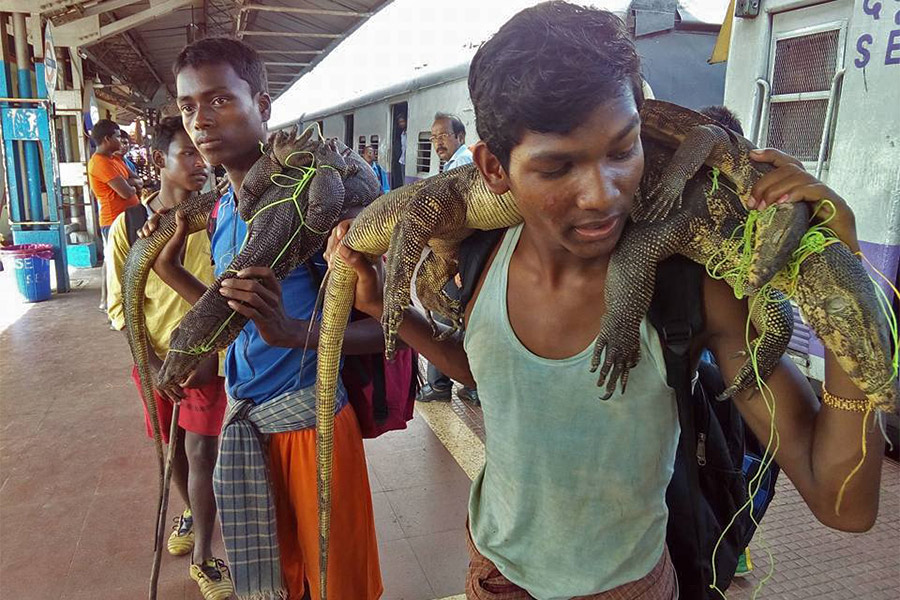
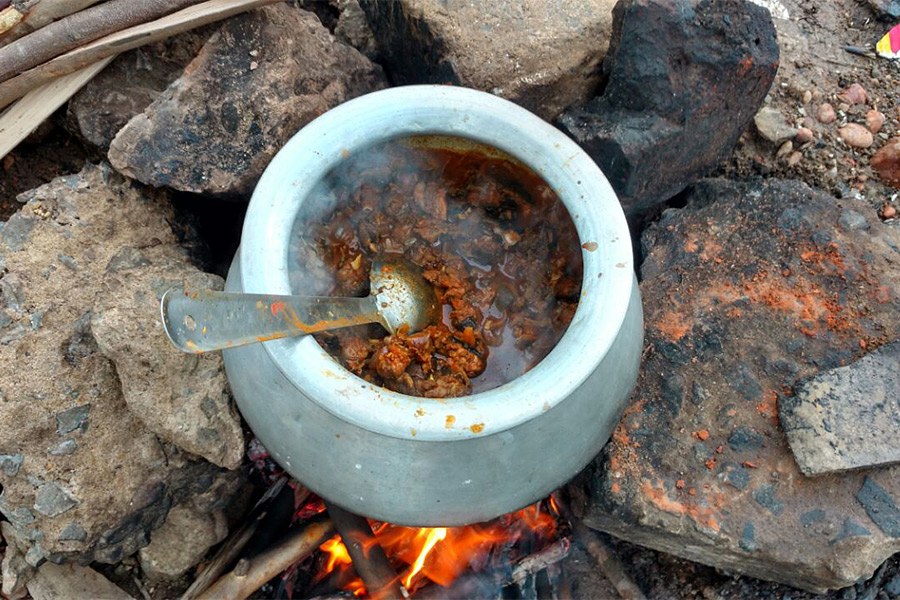

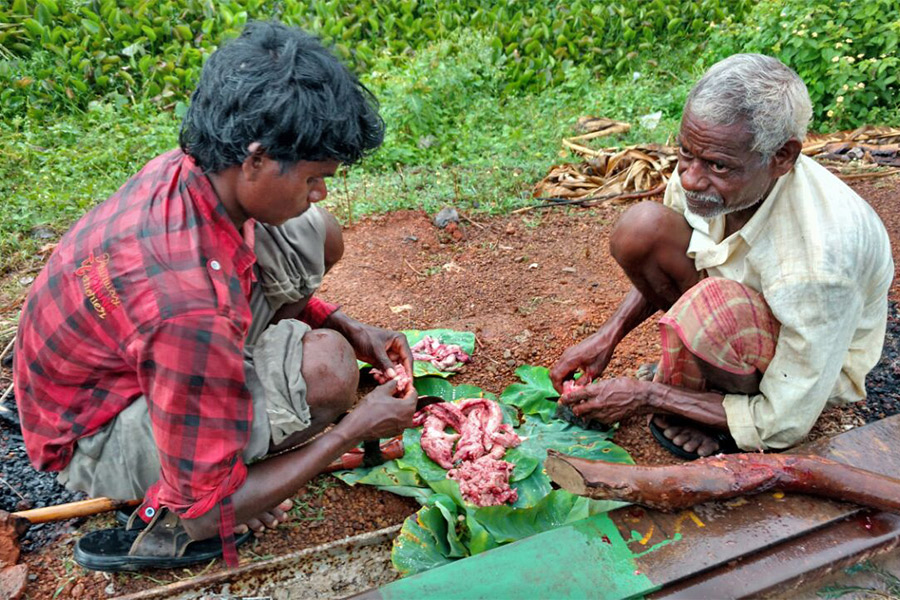
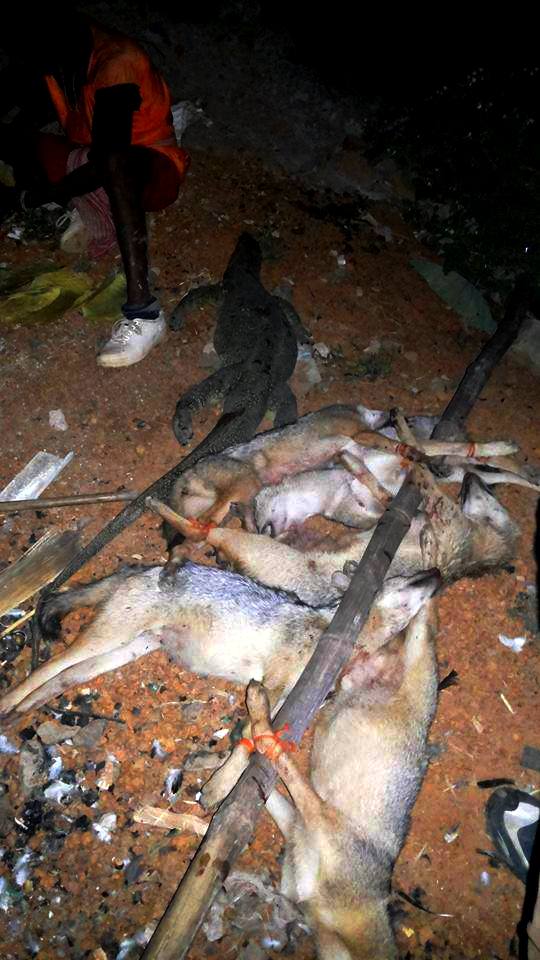
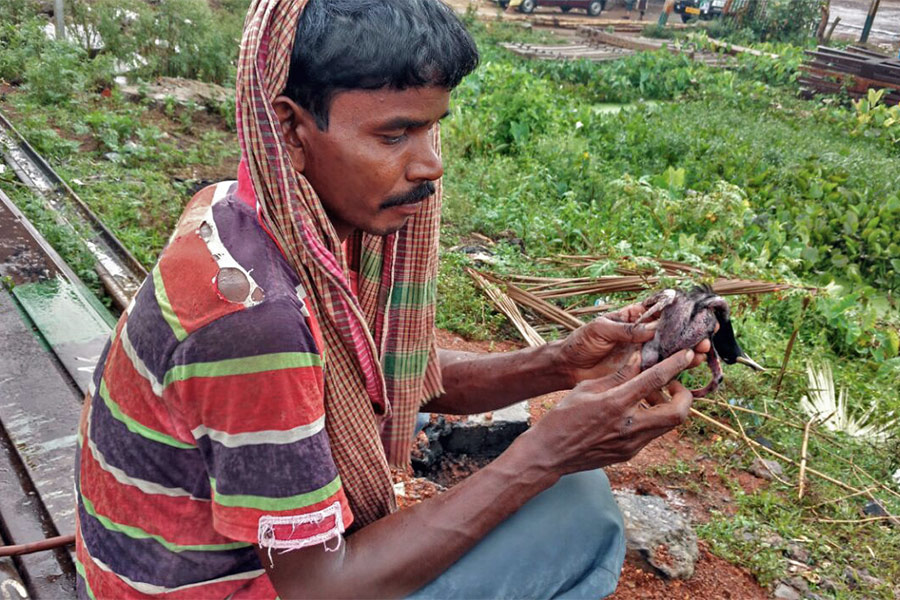
 CI is a non-profit, non-commercial portal that aims to facilitate wildlife and nature conservation by providing reliable information and the tools needed to campaign effectively.
CI is a non-profit, non-commercial portal that aims to facilitate wildlife and nature conservation by providing reliable information and the tools needed to campaign effectively.
Chosen as 'Picture of the Week'
This is a shocking documentation of blatantly illegal mass slaughter of wildlife and bush meat sold on various railway stations along the Howrah-Kharagpur line in West Bengal. Given this is a known ritual, authorities must act together and bring this shameful practice to a complete halt.